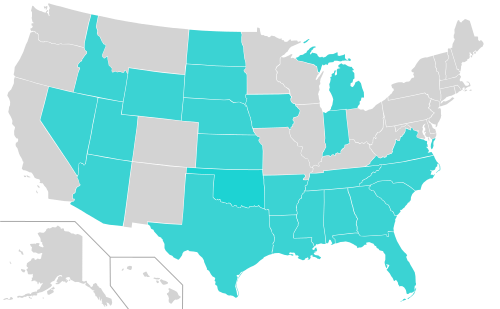But Don forgets that correlation does not imply causation.
In real life, states with right-to-work laws differ systematically from states without them, and this invalidates the comparisons.
Wikipedia has a convenient map of right-to-work states (in blue):

Clearly these states are not randomly distributed across the map, leaving plenty of room for geographical factors to influence the numbers (notably unemployment rates).
The personal income measure used by the BEA— I think this is what Ewing was referencing— is the sum of all income earned, meaning that immigration patterns influence the growth rates. (A growing population leads to a higher total personal income.) And, according to research by Harvard economist Edward Glaeser, among others, one of the main determinants of immigration is the elasticity of the housing supply— that is, how easy it is to build new houses as the price of houses increases. For all we know, personal income growth in right-to-work states is being driven by the housing market. The same applies to growth in private sector employment.
Or the differences could be driven by one of a thousand other factors.
From what I've seen, using statistics to tease out the effects of particular state policies is ridiculously hard to do, and requires a much stronger statistical background than I have. This is a lot of the reason why I didn't even broach the subject in my union essay.
A quick search for an academic analysis of the issue found only this paper by Thomas Holmes. By comparing bordering counties in different states, he finds that a business-friendly regulatory climate increases the share of employment in manufacturing by about one third. But this study looks only at manufacturing, and only at counties on the borders of states (which means the estimate is inflated by an unknown amount). And the contribution of right-to-work laws to business-friendly regulatory climates is unknown.
So we can guess that right-to-work laws will increase the share of our employment in manufacturing by anywhere from zero to one-third. Which doesn't get us very far.
No comments:
Post a Comment